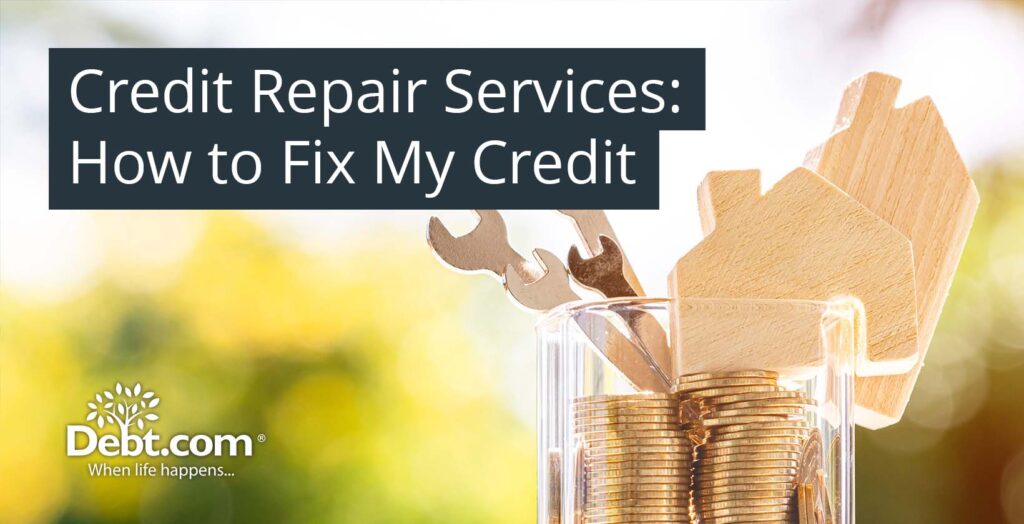
Poor credit can hold you back, making it difficult to get approved for loans, credit cards, and even housing. It may also result in higher interest rates, increasing borrowing costs, and could even impact job opportunities. However, bad credit isn’t permanent. You can take action to improve your credit and restore your financial stability. In this guide, we’ll cover DIY credit repair strategies, examine credit repair companies, and share valuable resources to help you achieve better credit health.
Repairing bad credit isn’t difficult, but it does require dedication, persistence, and smart financial habits. While it doesn’t happen overnight, consistent efforts such as making timely credit card payments, disputing inaccuracies on credit reports, and adopting strategic debt repayment methods can make a difference. A clear understanding of your credit score and report is crucial, as it helps identify problem areas and track progress.
The first step in improving your credit score is understanding what it is and the factors that influence it. A credit score is a three-digit number ranging from 300 to 850, determined by the details in your credit report. This report provides an overview of your credit history and financial habits, including payment history (on-time, late, or missed payments), credit utilization (the percentage of available credit used), total outstanding debt, length of credit history, new credit accounts, credit mix (various types of credit), public records (such as bankruptcies or liens), and credit inquiries. While different scoring models, such as FICO and VantageScore, analyze this data, they may weigh each factor differently, causing slight variations in your score depending on the model used.
There are multiple ways to tackle debt on your own without seeking professional help. Many of these involve obtaining new financing, such as a debt consolidation loan or a balance transfer credit card. Alternatively, you can negotiate directly with credit card issuers to arrange a repayment plan, such as a workout agreement (a self-managed debt management plan), deferment, forbearance, or even a settlement.
If you choose a non-financing approach, understanding how to negotiate effectively with credit card issuers is essential.
Ask for deferment:
Credit card deferment allows you to pause payments without facing penalties. It may also waive interest charges and other fees. To qualify, you must demonstrate financial hardship. Clearly explain your situation and provide a realistic timeline for when you will be able to resume payments. Ensuring the timeline is achievable increases the likelihood of approval.
Ask for forbearance:
Forbearance on your credit card may offer the option to reduce your payments temporarily with a modified repayment plan, rather than halting payments entirely. This is often referred to as a debt repayment plan by your credit card issuer. Be open about your financial difficulties and clearly explain what you can realistically afford to pay.
Ask for a workout agreement:
A workout agreement (or arrangement) is a repayment plan you negotiate directly with a creditor. Typically, the creditor will freeze your account, but in return, they may reduce or eliminate your interest charges and help you create an affordable payment plan.
This is usually a last-resort DIY option for accounts that are in default. Essentially, your creditor will freeze your account, preventing any new charges, and in return, they’ll lower or remove interest and penalties on the debt.
For this option, your account must still be with the original creditor. It’s most effective when you’re behind on payments but the account hasn’t yet been closed. This approach is similar to a debt management plan, but with the added responsibility of setting up a separate arrangement with each creditor. If you have multiple accounts, this method can be time-consuming.
Settle on your own.
Yes, you can negotiate settlement offers with creditors on your own, without needing a settlement company. Essentially, you propose to pay a percentage of the debt you owe, rather than the full amount. If they accept, the remaining balance is forgiven.
While this may sound like an ideal solution, it can be challenging to achieve on your own. One important caveat is that you’ll likely need to make a lump-sum payment to settle the debt. Unless you have a substantial amount of money available, this may not be a viable option.
Settlement offers can happen in two ways:
In either case, you can accept the offer or counter with a different proposal. If it’s a collection account, you might also attempt to negotiate a “pay-for-delete” agreement, or if it’s still with the original creditor, you could negotiate a “re-aging.” Keep in mind that these methods are not always successful. If a creditor or collector asks for a higher percentage in exchange for fixing your credit, ensure the agreement is put in writing before proceeding.
A balance transfer credit card allows you to move balances from your current accounts to a new card that offers a low or 0% APR on balance transfers. These cards often provide a 0% APR introductory rate for an initial period, typically between 6 and 18 months. However, the ability to pay off the transferred balance without interest usually comes with a fee, which is generally 3-5% of the total balance or a small fixed amount, such as $5 or $10.
This option is most effective if you have excellent credit and can pay off the entire balance before the 0% APR promotion ends. If you fail to pay off the balance during that period, you’ll revert to a high-interest credit card and still have a substantial amount of debt. This means you need consistent cash flow to succeed. If you’re low on cash or if it’s already tied up in other debts, this option might not be ideal for you.
If your credit score is still in good shape, there are two ways to relieve credit card debt using new financing. The idea is to take on a new form of debt that enables you to pay off existing debts more effectively, with the primary goal of reducing or eliminating the APR on your total credit card balance.
A debt consolidation loan is a personal loan This is a loan you take out with the goal of consolidating your debt. By doing so, you’ll only have one loan to repay, which can be advantageous since loans typically have much lower interest rates than credit cards. The better your credit score, the more favorable your loan terms will be. Additionally, loans often come with fixed payments, while most credit card APRs are variable and can change over time.
The debt consolidation approach is generally recommended for individuals with $35,000 or less in debt. However, some lenders may require you to close your credit cards to secure the loan, so be ready to lose access to those lines of credit. While your credit score may drop significantly in the short term, this method can help you save money over time.
If you’ve tried all the DIY methods and are still struggling to pay off your debt, it may be time to seek professional assistance. Professional help can often be the quickest, easiest, and most cost-effective way to eliminate credit card debt. credit counseling agencies which are government-regulated These organizations operate exclusively to help consumers. They can enroll you in a specialized credit card debt solution known as a… debt management program or (DMP).
This program is a form of assisted debt consolidation, but it doesn’t require taking out a new loan.
Here’s how it works:
Unlike other consolidation methods, with a debt management program, you pay off your entire debt. Because of this, many users who complete the program see improvements in their credit scores. The advantage of this strategy is that credit counselors work directly with credit card issuers and lenders to lower or eliminate interest charges and fees. This allows you to get out of debt more quickly, with lower monthly payments, and with less negative impact on your credit score. While you still owe your original creditors, you are simply repaying them in a more efficient and cost-effective manner.
Debt settlement programs allow you to eliminate debt by paying only a percentage of the total amount owed. It is typically the fastest and least expensive way to clear debt and is the closest thing to a credit card debt forgiveness program. While it can cause significant harm to your credit score, other debt relief options can have similar effects.
Among the available debt relief options, a legitimate debt settlement program is one of the most effective. Debt.com… surveyed more than 1,000 Americans
When asked about their views on debt settlement versus bankruptcy, more respondents considered debt settlement to be “helpful,” while they viewed bankruptcy as “risky.”
The following chart illustrates their feelings about each option:
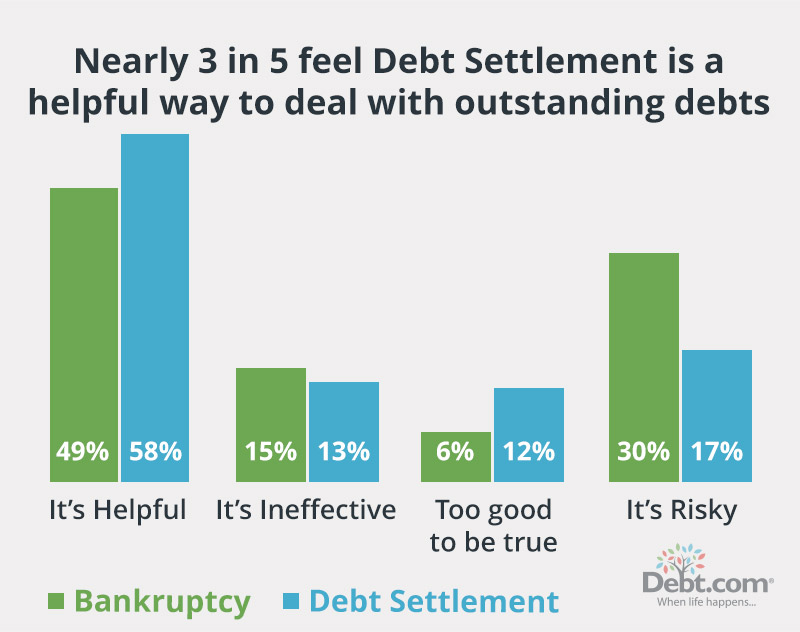
Here’s how professional debt settlement works:
Working with a professional debt settlement company can greatly improve your odds of success (these companies likely already have relationships with your creditors), but there’s still the issue of needing a lump sum to actually settle the debt.
By law, settlement companies can only charge fees once they successfully reach a settlement in your favor. Most companies will charge you a percentage of the amount they save you.
Not all credit card debt relief solutions are created equal! These bad ideas for debt relief put your finances on shaky ground and could make for a bumpy financial ride long-term.
You don’t just drain the funds you take out, you also lose out on the yield you would have received, putting you two steps back on saving for retirement.
In addition, retirement funds like a 401(k) and traditional IRA have early withdrawal penalties. If you take money out before you turn 59 ½ you’ll face a 10% charge on the funds. What’s more, you must pay taxes on the money withdrawn, since it counts as income.
Is Using Your 401k or IRA to Pay Off Credit Card Debt a Bad Idea? »
Credit card debt is unsecured, meaning there’s no collateral that secures the debt. Any option that taps home equity to get money, such as a home equity loan or cash-out refinance, is considered secured debt. If you borrow against your home equity to pay off credit card debt, you effectively convert unsecured debt to secured. If you default on the new debt, you could lose your home.
In general, you want to protect your home’s equity as much as possible. Borrowing against it is extremely risky, and it’s usually not worth that added risk to pay off your credit cards. Even if you default on a credit card and it goes to collections, they can’t take your home. In fact, they must sue you in civil court to force any kind of repayment. But once you take out an equity loan, your home is at risk of foreclosure if you fall behind with the payments.
If you have a life insurance policy that has cash value, then you can usually borrow against it. But just because you can doesn’t mean that you should. If you take money out, you effectively take out a loan against your insurance policy. You make a new debt with a whole new set of problems.
If you don’t pay the money back or die before it’s paid off, then the insurer will take out the amount owed plus interest. In other words, your family will have less life insurance to help them live after you’re gone. That money is there to provide your family with a financial safety net in case the worst happens. You don’t want to do anything that will weaken that safety net.
Should I Cash Out My Whole Life Insurance Policy to Pay Off Debt? »
Unless you don’t mind losing a friend or making family gatherings extremely awkward, it’s best to avoid borrowing money from people you know. Approximately one-third of Americans already know this and reported that they would prefer to go into debt than borrow from loved ones.
A recent survey from Lendingtree about lending between friends and family found that nearly half of Americans have lent money to a friend or loved one and over 1 in 4 regrets having done so. One in three (35%) of combined borrowers and lenders report that money hurt their relationship:
Borrowing money from someone you know rather than an institution can be a lot cheaper than going through with a formal loan, but it carries the risk of straining relationships.
Trying to avoid credit card debt in the future? No need to cut up your credit cards and swear off plastic for good. Credit cards can be extremely useful financial tools as long as you know how to use them. There are four key things to keep in mind when trying to use credit cards to your best advantage.
It can be daunting trying to figure out which type of credit card is best suited to your needs. We help break down the types of credit cards so you can have a better understanding of what you may be getting yourself into.
Don’t rush into a decision. Take your time and examine all your options before you pick a card. Whether you need a card to help rebuild your credit or a card that has a promotional 0% APR, or one that earns rewards, make sure it fits your specific needs. From there, you’ll narrow down your choices and decide between no more than two or three similar cards.
The credit card you choose should help you achieve your financial goals. So, don’t settle for less, but don’t shoot for the stars either. Find a balance that works for your lifestyle.
Negotiating lower interest rates is an art form in and of itself. It takes skill, knowledge, and a lot of patience. But the end game is worth the effort since your reward comes in the form of lower interest rates and lower monthly payments. You may even be able to get a reduction on the time it takes you to pay off your creditor.
The most surefire way to avoid credit card debt is to pay the statement balance (not the minimum balance) when the regular purchase APR is applied. If your financial situation allows, set up credit card auto payments and select to automatically pay the statement balance. The next best option is to set up automatic minimum payments and then make an additional payment within 30 days of your due date to pay off the remaining monthly balance. If you have a zero-percent APR offer active, all you technically need to pay is the minimum monthly payment. However, you should plan on paying off the entire balance by the end of that promotional period.
You may feel like you have your credit card debt under control but it could be costing you in more ways than you think, slowly but surely chipping away at your financial health.
Credit card debt can directly contribute to a lower credit score because it affects what’s known as credit utilization rate. Also sometimes referred to as debt-to-credit ratio, your credit utilization rate is a percentage that shows how much of your available credit is being used. It makes up 30% of FICO scores and is second only to payment history (which is obviously a huge deal to potential lenders).
The general rule of thumb is to keep your total credit usage below 30% but the lower it is, the better. A high credit utilization rate signals a greater reliance on credit which, to lenders, can indicate that you don’t have enough cash to pay for expenses and could have difficulty repaying what you owe.
Your credit card balance can indirectly make it more difficult to get approved for loans or other lines of credit and to get the best interest rates. Higher interest rates can mean more fees, more debt, and more negative remarks on your credit. It’s a vicious cycle.
Unpaid IOUs to credit card issuers can end up both directly and indirectly affecting your family. Spouses, children, or parents can find themselves saddled with lawsuits and bills.
Have you ever thought about what happens to credit card debt when you die? In community property states (Arizona, California, Idaho, Louisiana, Nevada, New Mexico, Texas, Washington, and Wisconsin), spouses can be held liable for the credit card debt of the deceased.
Children usually aren’t held directly responsible for a deceased parent’s debt unless they’re joint account owners. However, creditors can, and often do, go after the deceased’s estate which can detract from their inheritance. There are also bad apples that may pressure the child into paying off this debt even if they’re not legally liable.
Failing to pay your credit card bill is never a good idea. It can result in a slew of unpleasant side effects ranging from mildly inconvenient to majorly damaging your credit score.
If you’re having trouble making your payments or think that you might in the near future, contact your creditors as soon as possible (ideally before you miss your first payment). Being proactive and communicating with your creditors is much more effective than missing due dates and later trying to undo the damage and charges. You may be able to arrange deferment or forbearance to pause or reduce your payments while you get back on your feet. This will help you avoid credit damage and closed accounts.
The immediate consequence of not paying a credit card bill is that your account will be reported as delinquent, which is just a fancy term for being past due or overdue. It is in this stage that the initial penalties will be applied such as a late fee or penalty APR. Both of which can result in your remaining unpaid balance becoming even more expensive to carry.
Credit card issuers typically after 30 days report delinquent accounts to credit bureaus, although some will wait 60 days if this is your first time missing a payment. Once this negative remark hits your credit report you can expect your credit score to take a hit. Delinquency remains on credit histories for seven years. However, this can be avoided if you pay the past-due balance before the 30 days when it’s reported to credit bureaus.
If your account continues to be delinquent and several months of missed payments go by, the next stage is a credit card charge-off. A charge-off is when a credit card company or lender closes an account as a result of nonpayment. Essentially, they write your account off as a loss because they no longer expect to receive any payments. This happens to accounts that have been delinquent for more than 180 days.
This may sound like you’re off the hook, but you still owe the full amount even once the account is written off and deemed uncollectable. Failure to pay could end up in legal action. However, in most instances when this occurs, it’s no longer the original lender you’ll owe money to. They may hire a collection agency or sell your debt to a collection agency.
A charged-off account can cause serious damage to your credit that can be hard to undo. The charge-off will result in another ding on your credit report on top of the months of delinquency. And like delinquency, a charge-off will stay on your report for up to seven years, even if it’s eventually paid off. With that in mind, debt negotiation is often your best bet. You can ask for debt forgiveness. However, creditors will rarely agree to forgive your balance outright with no payment in exchange.
One of the most severe repercussions of not paying a credit card bill is an account levy. This is when a creditor seeks repayment by taking the funds directly from your accounts, usually a personal checking account. Credit card issuers must take you to court. If the court rules in their favor, then they can tap your accounts to withdraw your money directly. In addition to taking funds from an account, they can also garnish your wages (taking funds from a paycheck), force the sale of your property (including a home or car), or till tap to remove cash from your business’ cash register.
However, if you owe money on a credit card where a financial institution like a bank or credit union is the issuer of that credit card, they can bypass going to court and instead take money directly out of the checking or savings accounts you have with them. The exception is that you must have previously authorized that account to make automatic credit card payments.
Fortunately, there is legislation in place that protects consumers who are dealing with credit card debt. Keep these in mind when determining which strategy for getting out of debt is best for you. They’ll also help you identify if any debt collection methods you’re facing are being conducted legally.
The statute of limitations on debt is a protective measure for consumers that limits the window of time where a creditor (including debt collection agencies) could file a lawsuit against you to get the money you owe. Once the allowed timeframe has passed, typically 3-6 years, those debtors can no longer take you to court over the unpaid debt which becomes “time-barred”.
This statute applies to all types of debt such as mortgage debt, auto loan debt, medical debt, and private student loan debt in addition to credit card debt. The exact time frame can vary by state, as can the circumstances of when that countdown timer begins. Be mindful that making a payment (even a partial one) towards the overdue debt or even just acknowledging that you owe it can cause the timeframe to restart. Contact your state attorney general’s office to discover the specifics for your state.
The Uniform Debt-Management Services Act was a federal law passed in 2005, which governs the credit counseling and debt management service industry. As a result of the act, credit counseling agencies must register as a consumer debt management service in each state where they operate. They must also provide full disclosures about their debt management plan and a penalty-free three-day cancellation policy.
A common misconception is that there are federal credit card debt relief government programs that consumers can use to get out of debt. For the record, there are no grants or any federally sponsored repayment plans to pay off your credit card debts. That being said, the federal government does oversee and regulate the debt relief industry, which is where some of the confusion about government debt relief programs comes from.
According to the Federal Reserve Bank of New York, Americans collectively have $1.17 trillion in credit card debt. These figures are likely to increase as plastic continues to grow as the preferred method for making purchases among U.S. consumers.
Debt.com polled more than 1,000 Americans in its annual “Credit Card Survey.” More than 1 in 4 respondents say they have between $10,000 and $30,000 in credit card debt. Nearly 3 in 10 say they owe $5,000 to $10,000.
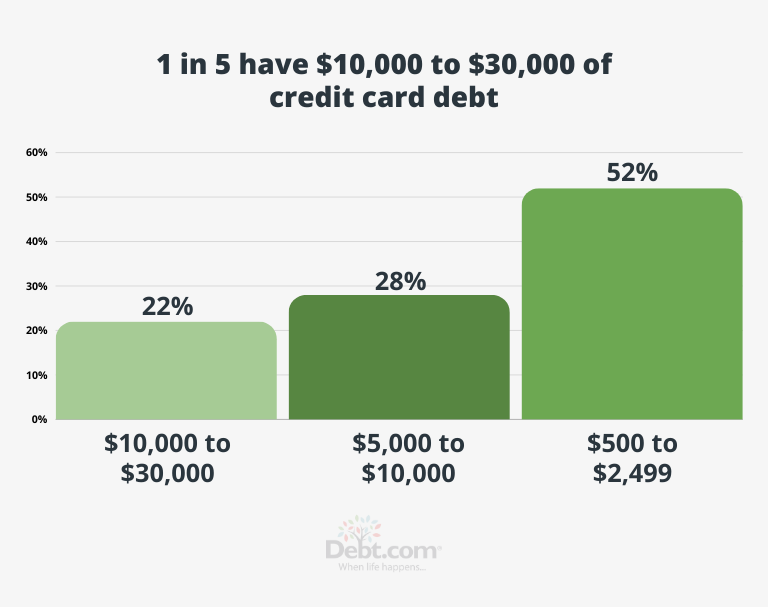
Credit card debt may not be the most critical source of debt for most Americans but when paired with rising mortgage debt, student loans, and unexpected healthcare costs, any credit card balance can be enough to pull your finances too thin for comfort.
Although overspending is an obvious cause of credit card debt, it isn’t the only one. At the core of the issue is that people simply don’t understand how credit cards work and how much their debt is actually costing them. According to TIAA Institute-GFLEC Personal Finance Index, only 48% of Americans have what’s considered fundamental financial literacy.
In Debt.com’s latest Credit Card Survey, more than half (57%) said they got their first credit card when they were between the ages of 18 and 24. When asked who introduced them to their first credit card, the most common answer was “their parents” – with 1 in 3 (32%) of respondents choosing that answer. One of the most interesting takeaways from the survey was the main reason why people use credit cards.
More than 1 in 4 (25%) say they use credit cards because of the convenience.
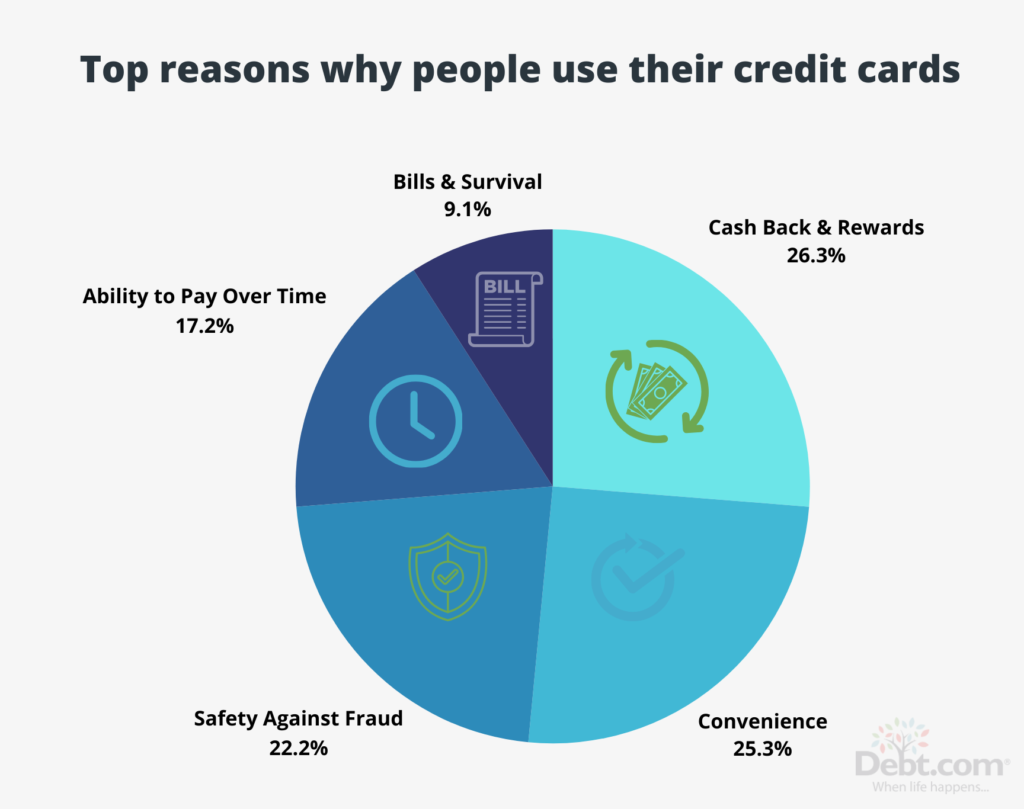
The fact that credit cards are accepted everywhere and essentially allow you to pay off bills over time rather than all at once makes it easy to fall into debt. One of the best ways to prevent credit card debt is to understand the basic elements of how credit cards work—especially the functionalities that tend to be pitfalls for consumers.
Credit card interest, or annual percentage rate (APR), is the amount you’re charged for carrying a credit card balance and how lenders make a profit. The average credit card interest rate is around 24%, even for someone with Excellent credit. By contrast, the average rate for a personal loan is around 12% for the same credit score.
Debt.com’s Credit Card Survey found nearly half (48%) of respondents with $10,000 to $30,000 in credit card debt say the average APR on their cards is 15-20%.
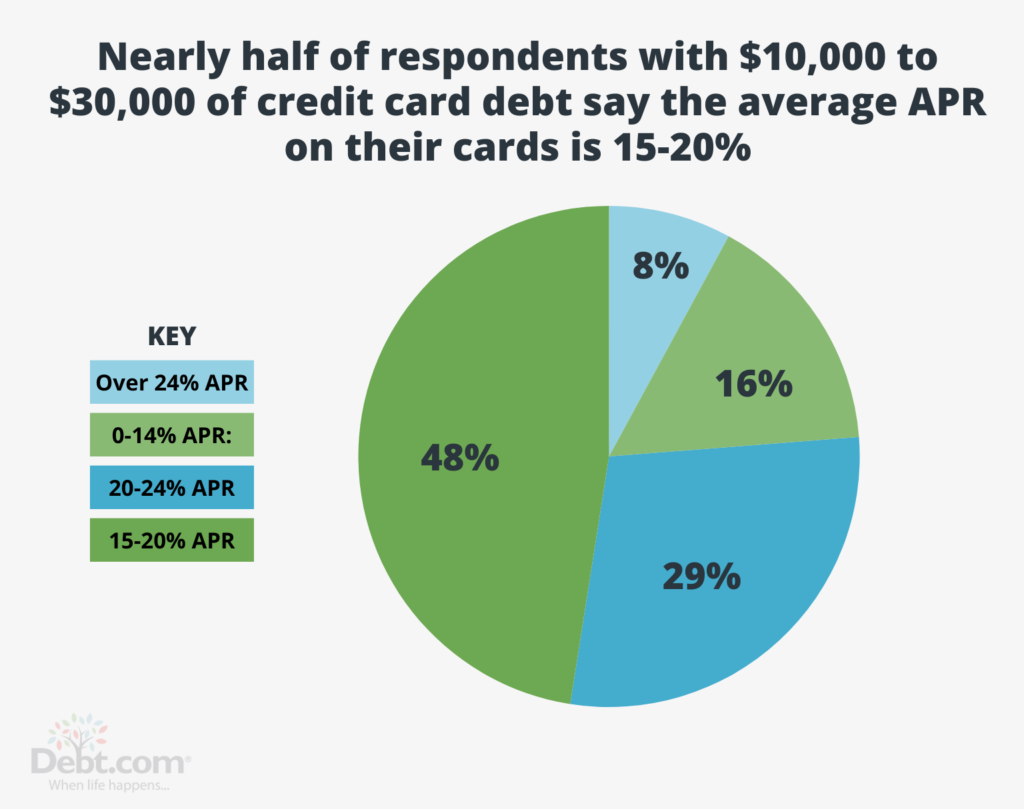
Credit card debt is often one of the most costly types of debt due to the extremely high-interest rates. Even carrying a balance for a short period can cancel out any rewards or benefits that come with the credit card. Furthermore, high APRs mean that a larger portion of your future payments goes toward interest rather than the principal, making it very difficult to pay off once the debt becomes unmanageable.
Minimum payments on credit cards are not intended to help you pay off your debt quickly. Instead, they’re designed to benefit banks and credit card companies. While they may seem more affordable and help you avoid penalties, in the long run, you end up spending more money and deepening your debt.
Making only minimum payments can result in years, or even decades, of paying off just one account, with thousands of dollars added in interest charges. It’s always better to pay as much as you can, ideally paying off the entire balance each month.
Every credit card comes with its own set of fees. These can include annual fees, late payment fees, balance transfer fees, foreign transaction fees, and cash advance fees. If you’re not careful with how you manage your credit card, you could end up with unexpected charges. The best way to find out what fees you might incur (and how much they are) is to review the Schumer box for the specific credit card you’re interested in.
Annual Fee: This is the yearly cost of owning a credit card, typically added to your statement balance. Some cards may waive this fee during the first year. If you no longer wish to pay it, contact your card issuer to ask if they can waive it again or to inquire about downgrading to a no-fee version of the card.
Late Payment Fee: This fee is charged if you fail to make the minimum payment by the due date. It’s applied immediately after the missed payment. Many issuers will waive this fee the first time you miss a payment, but you’ll need to contact them, as it’s not automatic. Your success in having it waived may depend on your customer history.
Balance Transfer Fee: A fee charged for transferring a balance from one card to another. It’s usually a percentage of the transferred amount or a flat fee, typically $5 or $10 (whichever is higher). This fee is added to your balance and can be paid off over time. Some balance transfer cards offer a promotional low or zero interest rate for a limited time.
Foreign Transaction Fee: This is an extra charge for purchases made outside the U.S., usually between 1% and 3%. Many cards, especially those for travel, don’t charge a foreign transaction fee.
Cash Advance Fee: Using a credit card for cash advances is one of the costliest ways to access cash. These come with very high fees, and the charges are applied immediately. Unlike regular purchases, which have a grace period before interest is charged (if the full balance is paid on time), cash advances don’t have any grace period and will accrue interest right away.
A credit limit is the maximum amount you are allowed to charge to your credit card. It’s determined based on factors like your income, credit score, and payment history. While having a higher credit limit offers greater borrowing power, it doesn’t necessarily mean you should use it all.
For one thing, maintaining a credit utilization rate under 30% is recommended to keep your credit score healthy. But beyond that, maxing out a credit card is a risky habit. Those who frequently use up their available credit may find themselves in trouble when credit card issuers automatically raise the credit limit, which many do periodically.
A higher credit limit can become a constant temptation for someone who hasn’t established good credit habits. The best practice for responsible credit card use is to only charge what you can afford to pay off in full by the due date, no matter how much credit you have available.
Below are a few of the most popular questions about credit card debt we’ve received. If you still have questions about credit card debt. Our comprehensive Credit Card Debt FAQ can answer any – and all – remaining questions. If not, you can always call us at . You’ll be connected with a friendly certified credit counselor that provides the answers you need.
Social Security income is generally safe from most debt garnishments. However, it is not safe from federal government garnishments. If you owe back taxes, federal mortgages, student loans, alimony, or child support payments, up to 15% or more of your Social Security income may be garnished depending on your state laws.
Read the full response to this question »
Thankfully, debtors’ prison ended in the 1800s. According to the Fair Debt Collection Practices Act, collectors cannot threaten you with jail time because of failure to pay a credit card debt. To do so would technically be breaking the law. If they did you, they would be fined and you could be compensated.
The only real way you can go to jail for racking up credit card debt is if you ran up credit cards using someone else’s identity which is credit fraud.
Read the full response to this question »
If a collector calls and threatens to take money directly out of your bank account, rest assured it’s probably a lie. There is, however, one exception. If the collector has already obtained a court order then they are legally able to take money out of your account. However, if that is the case they wouldn’t go out of their way to threaten you because they could simply take the money they came for and be on their way.
Only federal student loans and unpaid income taxes can be garnished out of your accounts or wages without a court-issued order. Debts incurred on credit cards or through personal loans cannot be settled with garnishment – unless the collector sues you and the court rules in their favor.
You can also find potential debt solutions in minutes using Instant Debt Advisor℠. It’ll ask you a series of questions to narrow down what kind of debt solution you need for your credit card debt – not what works for anyone else. It’s free, won’t impact your credit, and you’re always in the driver’s seat of your debt-free journey.
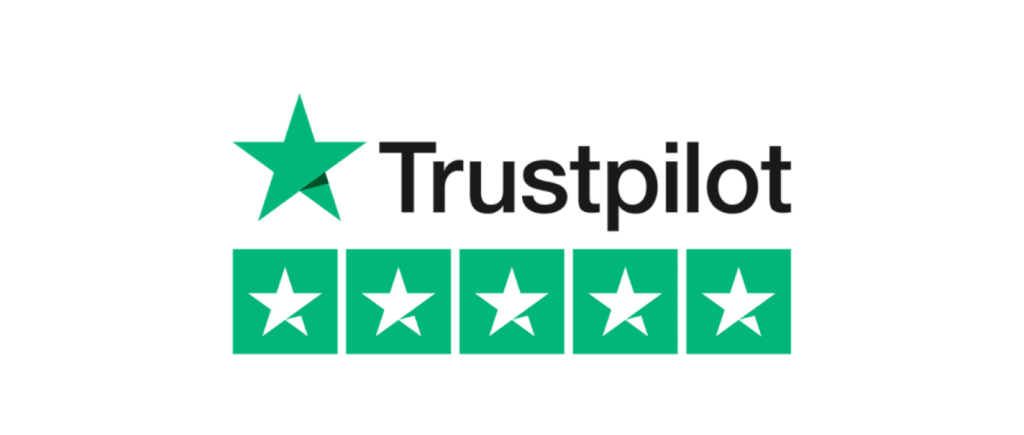
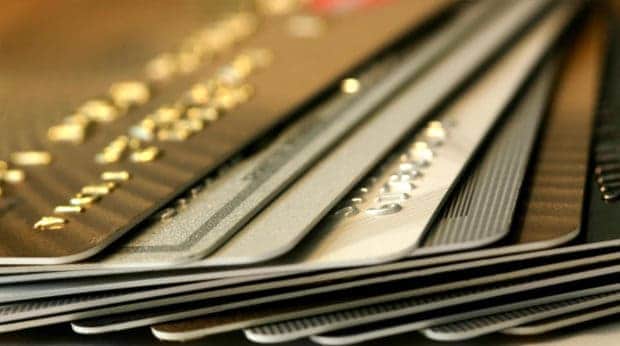
Solutions that make it easier to get debt-free when traditional payments aren’t enough.
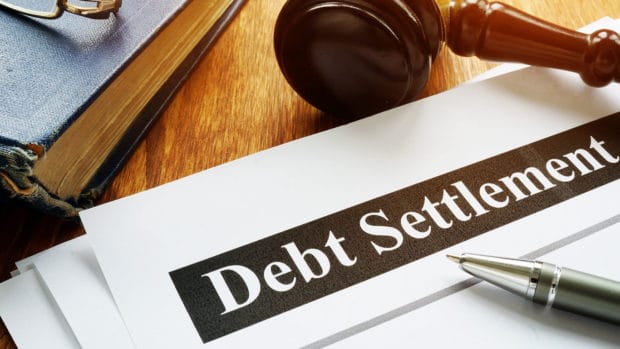
Solutions that make it easier to get debt-free when traditional payments aren’t enough.

Solutions that make it easier to get debt-free when traditional payments aren’t enough.




Don’t miss our future updates! Get Subscribed Today!
Sign up for our newsletter to get the latest articles, financial tips, tools, giveaways and advice delivered right to your inbox. Privacy Policy